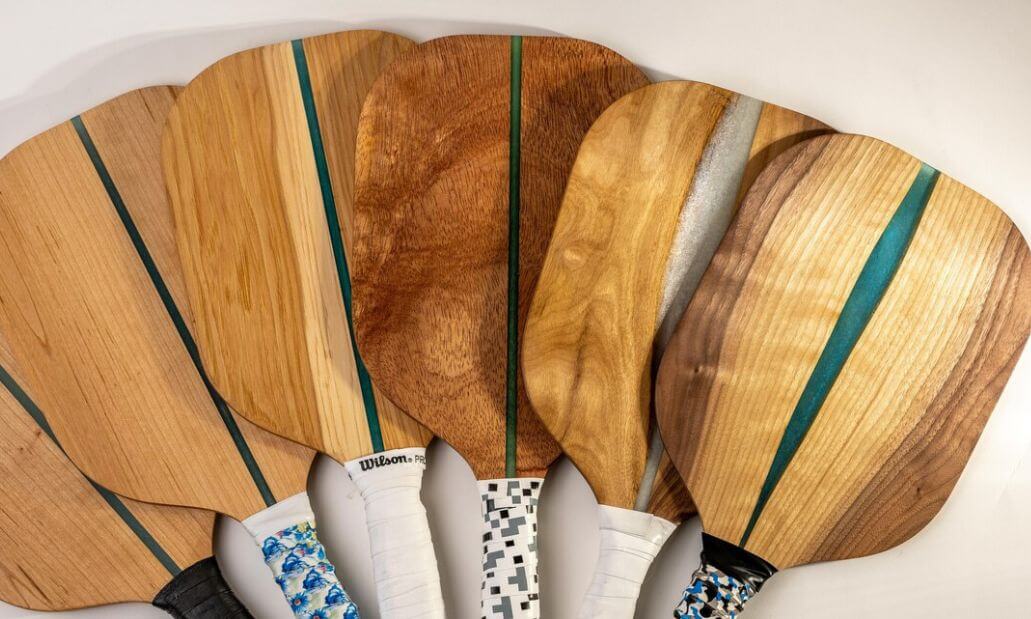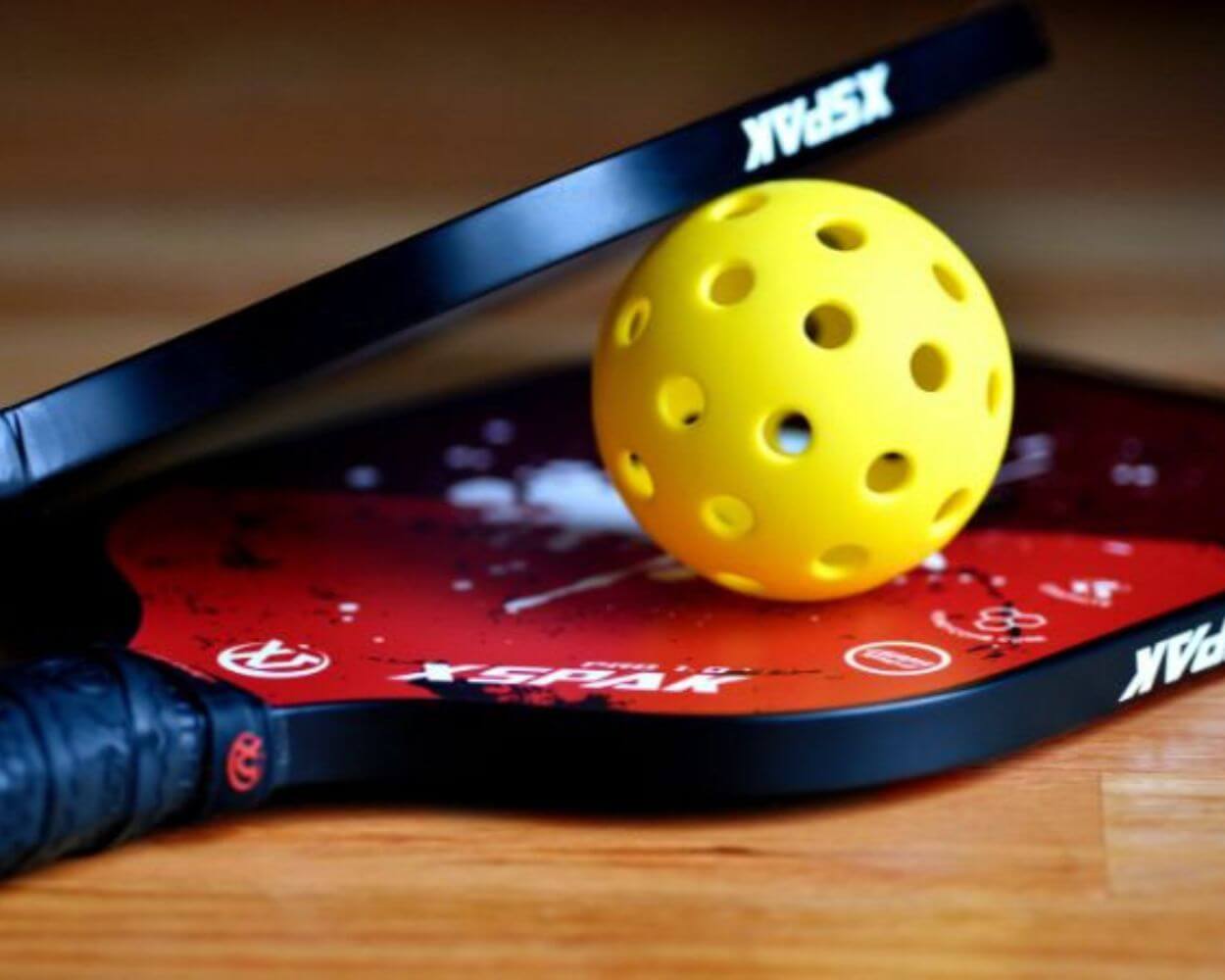Get The Scoop on How To Play Pickleball on A Tennis Court
Have you ever wondered; can you play pickleball on a tennis court? Well, the answer is a resounding yes! With some minor adjustments to the net height and court lines, you can easily transform a tennis court into a thrilling pickleball playground. Let’s dive into the exciting world of pickleball and explore the possibilities of playing this popular game on a tennis court.
Key Takeaways
- Experience the excitement of playing pickleball on a tennis court with just a few simple adjustments!
- Easily convert your tennis court into a pickleball court with temporary or permanent solutions, while abiding by local regulations and zoning laws.
- Distinguish lines easily using contrasting colors and clear communication for an enjoyable shared experience.
Playing Pickleball on a Tennis Court: Is It Possible?
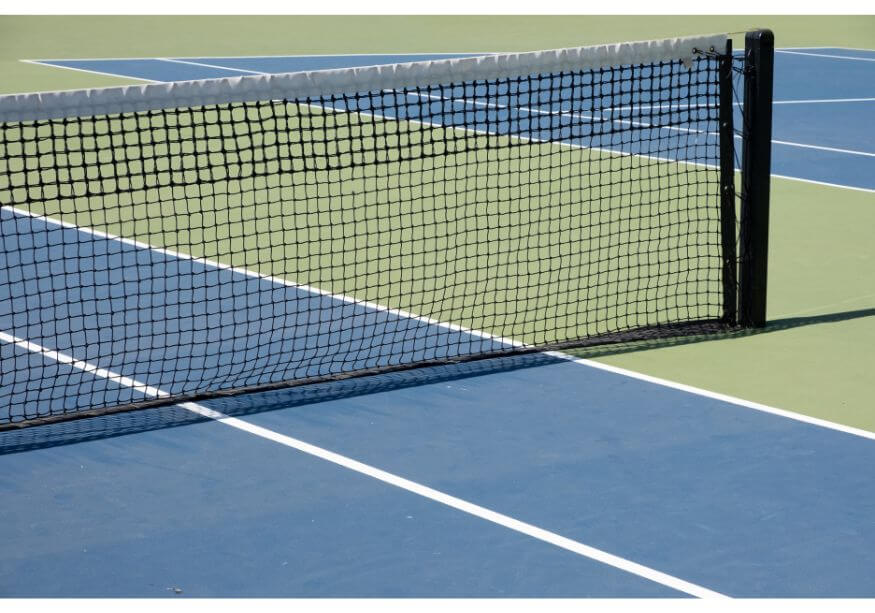
The idea of playing pickleball on a tennis court might seem a bit unconventional at first, but it’s entirely possible! In fact, many pickleball enthusiasts have successfully converted tennis courts into makeshift pickleball courts by simply adjusting the net height and marking the appropriate court lines according to pickleball court dimensions. So, whether you’re an avid tennis player looking to try something new or a pickleball fanatic searching for a place to play, a tennis court can serve as the perfect stage for your pickleball adventures.
Two primary modifications are necessary for this transformation: adjusting the net height and marking pickleball court lines. Here’s how you can easily execute these changes.
Adjusting the Net Height
One of the first steps in converting a tennis court into a pickleball court is adjusting the net height. A tennis net measures 42 inches at the post and 36 inches in the center, while a pickleball net delights with a measurement of 36 inches at the post and 34 inches at the center. To achieve the perfect height for your pickleball game, you can:
- Slide the center strap left or right by two inches
- Use tennis net adjusters that hook onto the net and lower it to 34 inches
- Use bungee cords to pull down the net from the posts
Remember to return the net to the correct height after your exhilarating pickleball session.
Alternatively, you can opt for a portable pickleball net that’s specifically designed for pickleball play. These portable nets are lightweight, easy to set up, and meet the regulation height requirements, making them an ideal solution for temporary pickleball court setups on tennis courts.
Marking Pickleball Court Lines
With the net height adjusted, the next step is to mark the pickleball court lines on the tennis court surface. You can mark the lines temporarily using tape, chalk, or vinyl strips. Pickleball lines should be two inches wide and of a contrasting color from the court surface, which helps players easily distinguish between tennis and pickleball lines during gameplay.
While marking the lines for a pickleball court, be sure to adhere to its standard dimensions: 20 feet wide and 44 feet long, including the sidelines and baselines. By adhering to these measurements, you’ll ensure that your pickleball court complies with standard regulations and provides an authentic playing experience for all participants.
Comparing Pickleball and Tennis Courts
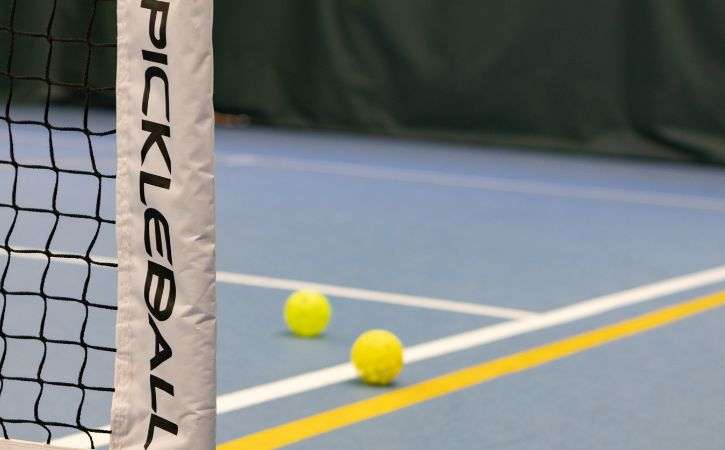
While pickleball and tennis share similarities in surface materials, it’s essential to understand the differences in dimensions, court size, and line markings between the two sports.
By grasping these distinctions, you’ll be better equipped to make the necessary adjustments when converting a tennis court into a pickleball court and ensure a smooth transition for all players involved.
Dimensions & Court Size
When comparing pickleball and tennis courts, one of the most significant differences is the court size. A pickleball court is much smaller than a tennis court, measuring 20 x 44 feet. On the other hand, a tennis court measures 27 x 78 feet. Given this size discrepancy, it’s possible to accommodate multiple pickleball courts on a single tennis court, making it an ideal space for group play, tournaments, or practice sessions.
Another notable difference is the distance from the centerline to the singles line, which is 13.5 feet for tennis and 10 feet for pickleball. Understanding these dimensional variations can help you adjust the court lines, net height, and playing area accurately, thereby creating a regulation-size pickleball court within a tennis court.
Line Differences
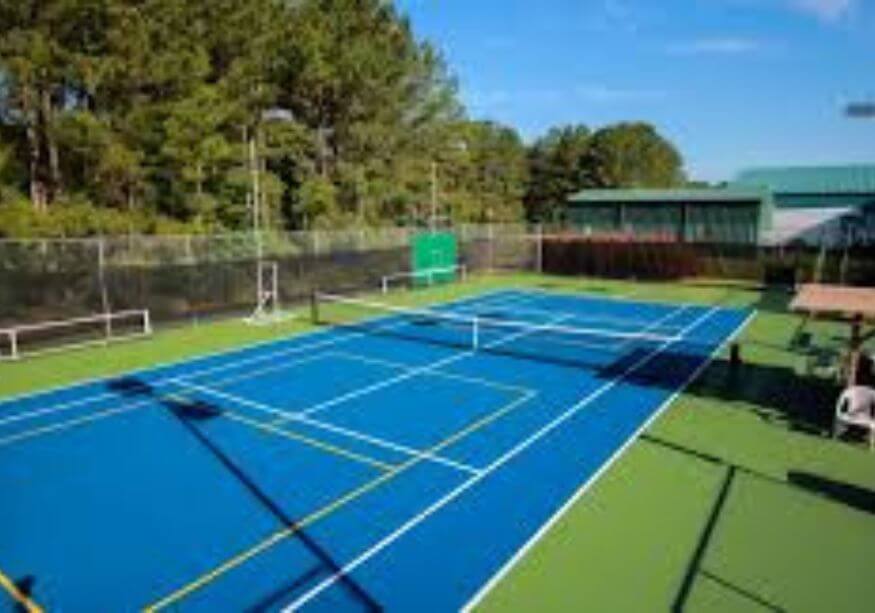
The line markings on pickleball and tennis courts also differ significantly. In pickleball, there’s a unique feature called the non-volley zone (kitchen) that extends seven feet from the net to the service area. This zone is designed to prevent players from smashing the ball at close range and adds an exciting strategic element to the game.
Tennis, on the other hand, features a more straightforward set of lines, including:
- The baseline
- Center mark
- Singles sidelines
- Doubles sidelines
- Service lines
By being aware of these line differences, you can effectively differentiate between the two sports while playing on a shared court and minimize line confusion during gameplay.
Fitting Multiple Pickleball Courts on a Tennis Court
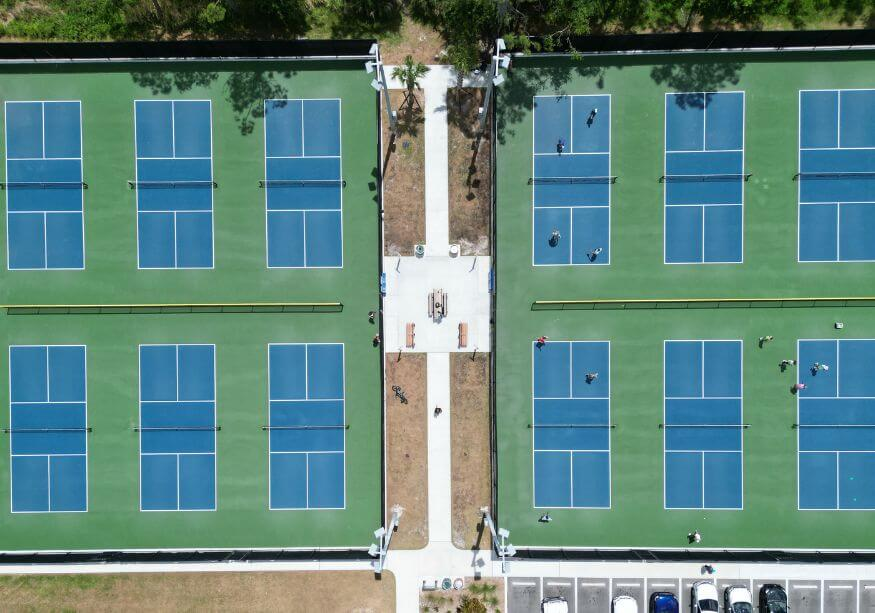
Have you ever wondered how many pickleball courts can fit on a single tennis court? As mentioned earlier, it’s possible to fit four pickleball courts on a tennis court, providing ample space for group activities, tournaments, or practice sessions on basketball courts as well. In fact, you can even have one pickleball court set up alongside the tennis court for additional playing options, ensuring that the pickleball courts fit seamlessly into your sports facility.
This can be achieved by utilizing either a two-court or four-court setup, depending on your needs and available space.
Two-Court Setup
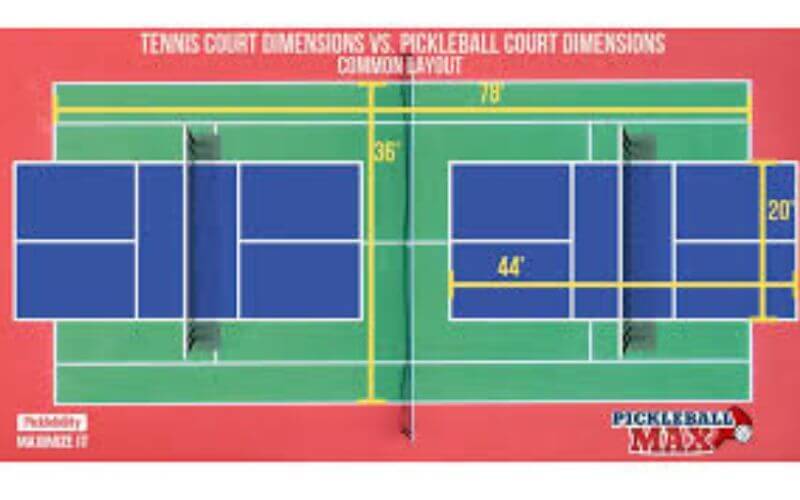
The two-court setup involves placing two pickleball courts on each side of the tennis court using portable nets. This configuration is ideal for casual play, practice sessions, or small group activities. To set up a two-court pickleball configuration on a tennis court, follow these steps:
- Lower the tennis net to 34 inches in the center.
- Mark the boundaries of each pickleball court using tape or paint. Be sure to follow the standard pickleball court dimensions of 20 feet wide and 44 feet long for each court.
- Leave at least 10 feet of space between the two courts for player safety.
In this setup, the back fencing or walls of the tennis court serve as barriers for the two pickleball courts. This provides a simple and efficient solution for creating multiple pickleball courts on a tennis court without the need for extensive modifications or additional equipment.
Four-Court Setup
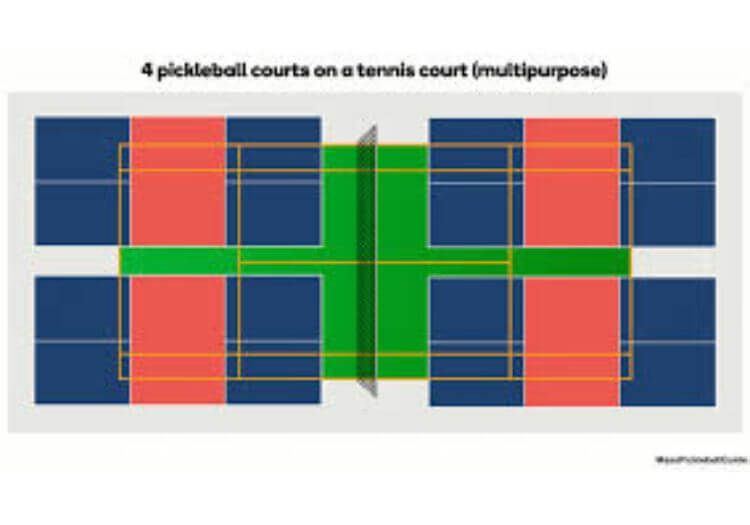
The four-court setup involves dividing the tennis court into four equal sections, with each section serving as a separate pickleball court. This configuration is perfect for larger group activities, tournaments, or practice sessions. To create a four-court setup, follow these steps:
- Lower the tennis net to 34 inches in the center.
- Mark the boundaries of each pickleball court using tape or paint.
- Ensure that each court adheres to the standard pickleball court dimensions of 20 feet wide and 44 feet long.
Although a four-court setup allows for more simultaneous gameplay and accommodates more players, it’s essential to be aware of potential issues, such as the tennis posts, which may obstruct play. Nevertheless, a four-court configuration offers an excellent option for maximizing the available space on a tennis court for pickleball play.
Essential Equipment for Playing Pickleball on a Tennis Court

Before embarking on your pickleball adventures, ensure to gather all necessary equipment to play pickleball on a tennis court for a fun and safe gameplay experience. This includes portable pickleball nets, paddles, and balls, all of which can be found at most sporting goods stores or online retailers.
Portable Pickleball Nets
Portable pickleball nets are a fantastic solution for setting up a pickleball court on a tennis court with ease. These nets are lightweight, durable, and easy to assemble, making them an ideal choice for temporary or occasional pickleball play.
When choosing a portable pickleball net, consider features like a carrying case or wheels for easy transportation, a snap-lock system or adjustable height for fast setup, and sturdy legs or a weighted base for stable play.
Some of the best portable pickleball nets available on the market include the SwiftNet 2.1 and Escalade Sports ONIX Pickleball Regulation-Size Net. These nets meet the official pickleball regulations for height and width, ensuring a regulation-size playing experience on a tennis court.
Paddles & Balls
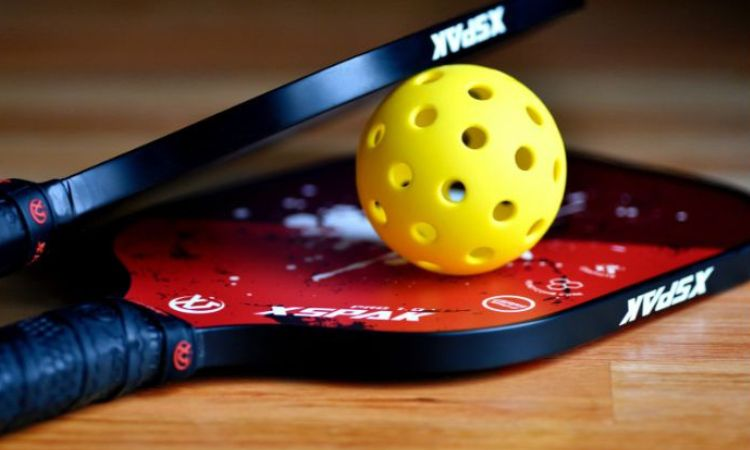
Pickleball paddles and balls are essential for gameplay and can be found at most sporting goods stores or online retailers specializing in pickleball equipment.
Pickleball paddles are typically made of materials such as:
- Graphite
- Carbon fiber
- Fiberglass
- Wood
Composite paddles, which are made from a combination of materials like fiberglass and polymer, are a popular choice.
Pickleball balls are made of smooth molded material and have a uniform color, with a diameter between 2.87 inches and 2.97 inches as required by official rules. It’s vital to have the appropriate equipment, like a tennis ball for tennis, for an authentic and enjoyable pickleball experience on a tennis court.
Converting a Tennis Court into a Pickleball Court: Costs & Considerations
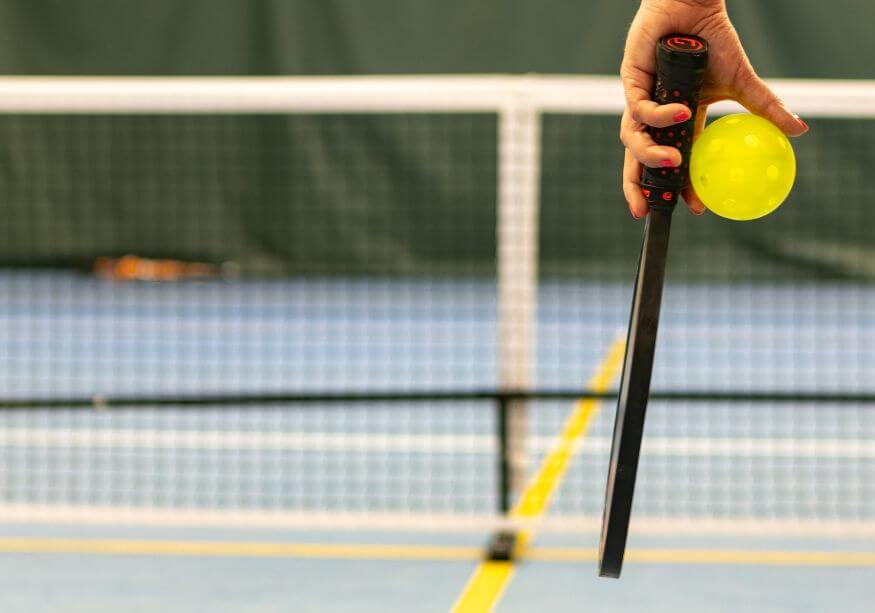
The cost of converting a tennis court into a pickleball court varies based on the degree of permanence and the materials used. Here are some options:
- Temporary conversions, such as using tape or chalk to mark court lines, are relatively inexpensive.
- More permanent conversions, like professional line painting, can cost more.
- Complete court overhauls, including resurfacing and installing permanent pickleball lines, can be the most expensive option.
Let’s explore the costs and considerations associated with temporary and permanent pickleball court conversions.
Temporary Conversion
The costs associated with a temporary conversion of a tennis court into a pickleball court are minimal, making it a budget-friendly option for casual or occasional play. Materials like tape or chalk can be used to mark court lines temporarily, allowing for easy removal when the court is needed for tennis again.
A pickleball marking kit is another option for a temporary conversion, providing all the necessary materials to mark the court lines. Regardless of the method chosen, temporary conversions offer a cost-effective and flexible solution for enjoying pickleball on a tennis court without making permanent alterations to the court surface.
Permanent Conversion
Permanent conversions of tennis courts into pickleball courts can range in cost from a few hundred dollars for professional line painting to tens of thousands of dollars for a complete court overhaul. In contemplating a permanent conversion, it’s important to consider the pros and cons of each option, keeping in mind factors like the level of investment, community approval, and long-term use.
Regardless of the level of permanence chosen, it’s crucial to comply with local regulations and zoning laws when converting a tennis court into a pickleball court. Obtaining permits and adhering to legal requirements may be necessary, and consulting with local authorities or a professional can help determine the specific permits and regulatory considerations needed for your location.
Tips for Minimizing Line Confusion on a Shared Court
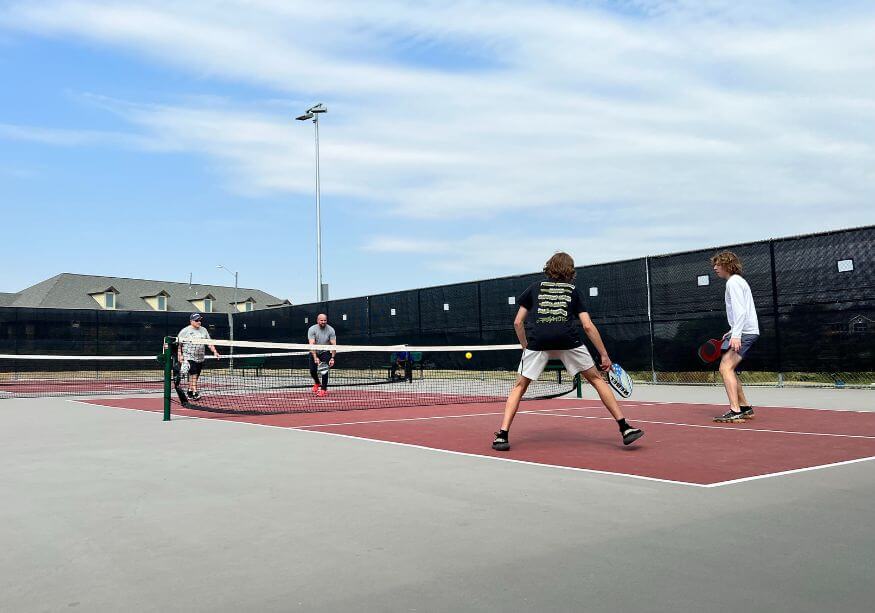
Sharing lines between pickleball and tennis on the same court can occasionally cause confusion among players. To ensure a smooth and enjoyable gameplay experience, it’s essential to minimize line confusion.
One approach to mitigate this is using contrasting colors for pickleball lines, aiding players in differentiating between the two sports and averting potential confusion.
Contrasting Colors
Employing a contrasting color for pickleball lines differentiates them from tennis court lines, thereby enabling players to quickly distinguish between the two. Some common colors used for marking pickleball court lines on a tennis court include:
- White
- Yellow
- Orange
- Green
- Deep red
All of these colors provide a high level of contrast with the surrounding surfaces.
By choosing a contrasting color for your pickleball lines, you’ll ensure that players can easily identify the correct lines and boundaries during gameplay.
Clear Communication
Clear communication between players is essential for preventing confusion and misunderstandings during a pickleball game on a shared court. By discussing game plans, calling out shots, and practicing together regularly, players can develop a stronger understanding of the game’s rules and strategies, ultimately leading to better teamwork and coordination on the court.
In addition to clear communication, practicing good sportsmanship and maintaining a friendly atmosphere on the court can further enhance the overall gameplay experience and reduce the likelihood of confusion or disputes arising from shared court lines.
Summary
In conclusion, playing pickleball on a tennis court is not only possible, but it’s also an exciting and enjoyable experience for players of all skill levels. By making minor adjustments to the net height, marking appropriate court lines, and utilizing essential equipment like portable pickleball nets, paddles, and balls, you can transform a tennis court into a thrilling pickleball playground. So grab your paddle, gather your friends, and get ready to enjoy the exhilarating world of pickleball on a tennis court!
Frequently Asked Questions
Can you make a tennis court into a pickleball court?
Yes, you can transform a tennis court into four pickleball courts - all you need is some painting and the right measurements!
How many pickleball courts fit on tennis court?
You can fit four pickleball courts on a single tennis court - just the right size for badminton and pickleball!
How do you adjust a tennis net for pickleball?
Lower the tennis net to 34" in the center, and optionally add tape or paint lines for pickleball on the court. This way, the court can be used for both tennis and pickleball seamlessly.
What equipment is necessary for playing pickleball on a tennis court?
Get ready for some pickleball fun! You'll need portable pickleball nets, paddles, and balls to play on a tennis court.
What is the cost of converting a tennis court into a pickleball court?
Converting a tennis court to a pickleball court can be done for just a few dollars with temporary tape or chalk, or cost thousands for permanent professional line painting or court overhauls - it all depends on your needs!
Thanks for Reading!
J
Related Reads:
